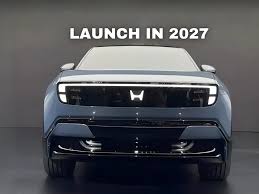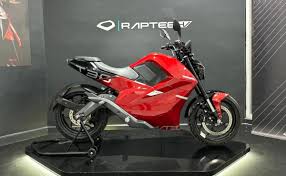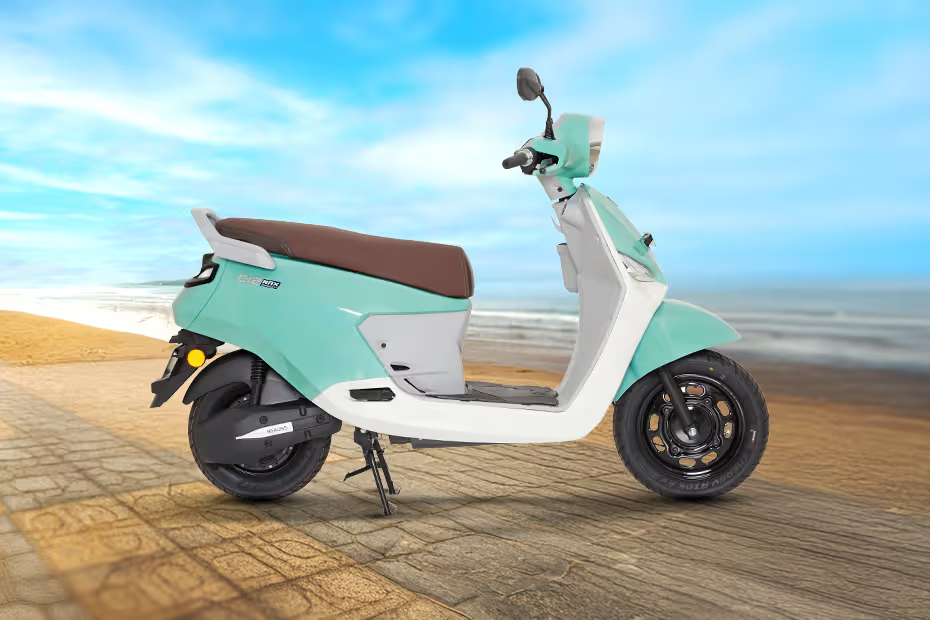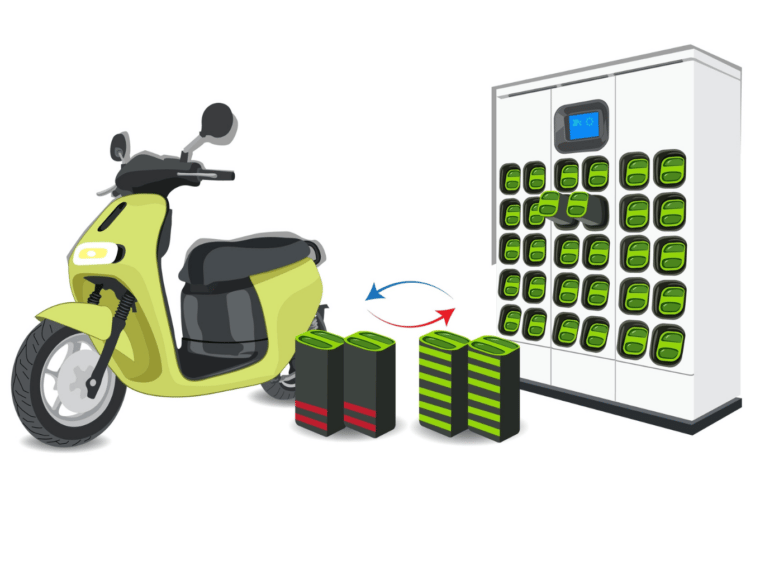Introduction
Renault has finally electrified its most popular budget hatchback, the Renault Kwid EV. This marks a significant step into the affordable EV segment. With its overseas launch already generating interest, Indian buyers are eagerly awaiting the electric version of a car known for being compact and ideal for city driving.
Overview of the overseas launch:
- The Renault Kwid EV, also called the Kwid E-Tech, has been officially launched in select international markets, including Brazil.
- It reflects Renault’s plan to grow its electric mobility presence in emerging markets.
- The overseas model has design changes such as a closed front grille, blue EV accents, and LED daytime running lights, making it different from the traditional Kwid.
- Performance highlights include a 26 to 27 kWh battery, an electric motor producing about 48 kW (65 PS), and a claimed range of 230 to 250 km.
Hint at India’s anticipation — why this EV matters for Indian buyers:
- The Kwid EV is expected to be affordable, targeting the budget EV market alongside competitors like the Tata Tiago EV.
- The Renault EV made in India qualifies it for FAME III subsidies.
Background: Kwid’s Legacy & Global EV Push
The Renault Kwid has become one of India’s top budget hatchbacks. The Renault Kwid became Renault’s best-selling model in India and a strong export product for emerging markets. Now, as the world moves toward clean mobility, Renault is set to give its most popular small car an electric heart. This aligns with its vision to make sustainable driving available to everyone.
The Kwid’s journey in India since 2015 shows how a low-cost, youth-friendly car can succeed:
- Launched at an entry price of about ₹2.6 lakh in 2015, the Kwid changed expectations for budget cars. It offered bold design, touchscreen infotainment, and an SUV-like stance.
- Over 5 lakh units have been sold in India, making it Renault’s biggest hit in the country.
- It targeted young, urban buyers seeking a stylish yet practical city car. It became a strong alternative to models like the Alto and Eon.
- Its success helped Renault build a solid dealer network and gain brand recognition in India’s small-car segment.
 Renault’s global EV goals include expanding from Zoe to Megane E-Tech, emphasizing affordable EVs:
Renault’s global EV goals include expanding from Zoe to Megane E-Tech, emphasizing affordable EVs:
- Renault has been one of Europe’s early EV leaders with models like the Zoe, Twingo E-Tech, and Megane E-Tech Electric.
- The company’s new plan, called “Renaulution,” focuses on providing both premium and affordable EVs within the same portfolio.
- Renault aims for 100% EV sales in Europe by 2030, while also expanding low-cost EVs in Asia, South America, and Africa.
- The Kwid EV fits into this vision as the most affordable electric Renault, designed for developing economies where EV adoption is just starting.
The Kwid EV is based on the K-ZE / Dacia Spring platform:
- The electric Kwid comes from the Renault City K-ZE, which launched in China in 2019.
- This EV uses the CMF-A platform, the same framework that supports the petrol Kwid, modified to include electric components.
- The model was later rebranded in Europe as the Dacia Spring EV, becoming one of Europe’s top-selling entry-level electric cars.
- Its success abroad showed that the platform can offer reliable performance, safety, and efficiency at a reasonable cost.
Renault’s mission is to make electric mobility affordable in developing markets:
- Renault aims to make EVs common in price-sensitive countries by using local production and shared platforms.
- The Kwid EV project is crucial to this strategy, with a goal to make electric cars reachable for middle-class buyers, not just higher-end customers.
- The company believes compact EVs like the Kwid can drive faster adoption by meeting everyday commuting needs.
- With India being one of the fastest-growing EV markets, the Kwid EV could be the model that introduces millions to electric driving.
Overseas Launch Details
- The Renault Kwid EV is designed to be an affordable EV, combining Renault’s budget-friendly with modern electric technology. Renault’s focus on compact EVs hints at a possible debut in India, where excitement is already growing.
- The Renault Kwid EV made its first official appearance in Brazil. It aims to attract urban commuters looking for compact and affordable EV options.
- In addition to Brazil, similar models are sold as Dacia Spring in Europe and K-ZE in China. This shows Renault’s multi-market strategy.
- Launching in South America allowed Renault to assess market acceptance, government incentives, and customer feedback before entering India.
Renault Kwid E-Tech / City K-ZE:
- Globally, the EV is marketed as Renault Kwid E-Tech in Brazil and City K-ZE in other regions.
- The “E-Tech” name connects it to Renault’s electric vehicle lineup, linking it to models like Megane E-Tech.
- This consistent naming builds a recognizable EV identity while allowing for regional variations.
Closed grille, blue EV accents, LED DRLs:
- Unlike the petrol Kwid, the EV features a closed front grille for better aerodynamics.
- Blue accents on the grille, badges, and bumper highlight its electric identity.
- LED lights give it a modern and premium appearance.
Aerodynamic wheels, EV badge, repositioned charging port:
- Lightweight aerodynamic wheels enhance range and efficiency.
- A dedicated EV badge sets it apart from the ICE Kwid.
- The charging port is moved for easier access, suitable for home and public chargers.
8-inch infotainment touchscreen with Android Auto & Apple CarPlay:
- The touchscreen supports navigation, upcoming streaming, and smartphone integration.
- Some trims offer wireless Android Auto/Apple CarPlay.
Digital instrument cluster, wireless connectivity:
- The fully digital display shows range, speed, and energy consumption.
- Some trims support over-the-air updates for software improvements.
Two-tone interiors with sporty contrast touches:
- This adds a premium feel to a budget car, attracting younger buyers.
- Seat upholstery and door trims feature contrasting patterns for a lively cabin.
Performance & specs:
- Motor output (48 kW / 65 PS), instant torque:
- The electric motor provides quick throttle response, perfect for city driving.
- Instant torque allows for swift acceleration despite the car’s small size.
Battery pack around 26.8 kWh:
- The lithium-ion battery supports a claimed range of 230–250 km.
- It is placed under the floor to maintain cabin space and stability.
Claimed range: 230–250 km (WLTP / real-world):
- This is sufficient for daily urban commuting and short weekend trips.
- The range may vary based on driving style and climate.
- Charging time: fast charge (30–40 min, 0–80%), home charge (6–8 hours):
- AC home charging supports overnight convenience.
- DC fast charging provides quick top-ups during city travel.
Optional ADAS or rear sensors in global trims:
- Some international versions offer parking sensors, a rearview camera, and lane departure warning.
- These features may be included in premium variants in India.
India Launch Speculation
The Renault Kwid EV is creating a lot of excitement in India. Automakers and fans are closely watching for spy sightings and insider news. The overseas model is already grabbing attention. Renault seems to be preparing a local version designed for the Indian market. Their goal is to provide an affordable, practical, city-friendly electric hatchback that could change the budget EV segment.
Test mules spotted near Chennai and Pune provide the first hints of localization.
- Several camouflaged Kwid EV test cars have been seen on Indian roads, especially around Chennai and Pune.
- This suggests they are in the early stages of testing.
- Observers have noted minor design changes to fit Indian road conditions, including slightly raised suspension and reinforced underbody panels.
- The sightings confirm that Renault is making India-specific adjustments, such as software calibration to handle heat, traffic, and humidity.
Sources suggest the India launch may occur by late 2025 or early 2026.
- Industry insiders say that Renault plans to launch the vehicle before the end of 2025 officially.
- Dealers are reportedly receiving training on EV service, battery handling, and after-sales support to prepare for the launch.
Renault is also looking into battery sourcing and subsidy eligibility.
- They are exploring local battery assembly or import options to meet FAME III subsidy guidelines.
- Achieving subsidy eligibility is crucial for meeting the ₹7 to 9 lakh price range, which would make the Kwid EV more competitive.
- Decisions about battery procurement will affect the final range, charging speed, and overall cost for buyers in India.
Expected trim levels and localization efforts aim to reduce costs.
- The Kwid EV is likely to offer 1 or 2 trims with selective feature reductions to keep it affordable.
- Some premium features like advanced driving assistance systems, large infotainment screens, or alloy wheels may only be available on top trims.
- Renault might also use locally sourced components for interiors, plastics, and electronics to manage costs and ensure easier servicing.
The possible price bracket is estimated to be ₹7.5 to 9 lakh (ex-showroom).
- Early predictions suggest pricing will align with the Tata Tiago EV and other budget city EVs.
- Local subsidies and state incentives could further lower the out-of-pocket cost for buyers.
- This strategy would help make the Kwid EV attract first-time EV owners.
India-Specific Adaptations
The Kwid EV fits well into the Indian market. Renault is expected to make several changes tailored to local conditions, regulations, and cost considerations.
Different battery chemistry or a lower-capacity pack for cost efficiency:
- The India-bound Kwid EV may have a slightly smaller battery or modified chemistry to cut costs without sacrificing essential range.
- This could lower production expenses and qualify the car for government EV incentives.
- Battery packs may be sourced locally or assembled in India to comply with FAME III subsidy rules.
Software tuning for Indian climate and traffic conditions:
- EV systems will be adapted to manage high temperatures, heavy traffic, and frequent stop-and-go city driving.
- Battery management and motor control software might be optimized for a consistent range in hot climates.
- Regenerative braking and energy recovery may be adjusted specifically for Indian urban roads.
Safety updates for Indian crash norms:
- The Indian Kwid EV will meet AIS-156 safety standards and Bharat NCAP crash test requirements.
- Reinforcements may include sturdier structural frames and additional safety features in certain trims.
- Airbags, ABS, and ESC will remain standard, with optional features like rear parking sensors or cameras on higher trims.
Simplified features, possibly a smaller infotainment screen or fewer sensors:
- To keep costs competitive, some premium features from the overseas model might be simplified or left out.
- For instance, the infotainment screen could be smaller, wireless connectivity might be limited, and ADAS features might be reserved for top variants.
- Interiors may use more locally sourced materials without losing comfort or style.
Local production at the Renault-Nissan Chennai plant for FAME III compliance:
- The Chennai plant will likely handle assembly to meet local manufacturing rules for subsidies.
- Local production helps lower import duties, streamline supply chains, and ensure faster service and parts availability.
Competitive Landscape
The Renault Kwid EV will enter a competitive budget EV segment in India. The Renault Kwid has advantages like brand recognition. However, it needs to tackle challenges such as limited charging options and cost-sensitive buyers. Understanding how it stacks up against competitors is key to seeing its potential impact.
- Its compact size is perfect for city driving and parking in crowded areas.
- Renault’s reliability and service network are familiar to Indian buyers from their experience with the ICE Kwid.
- Brand familiarity helps first-time EV buyers feel confident in the product.
- The affordable price range could make it an entry-level EV for broader adoption.
Renault’s India Strategy
The Renault Kwid EV is a key part of its long-term plan to regain its position in India’s tough automotive market. The company hopes to attract first-time buyers and gain a presence in the growing EV market. The Kwid EV is marketed not just as an electric car but as a way for urban Indians to explore Renault’s updated product lineup.
Kwid EV as part of Renault’s five-car renewal plan for India:
- Renault plans to refresh five vehicles in India over the coming years, focusing on both internal combustion engine (ICE) and EV markets.
- The Kwid EV is the main electric vehicle in this initiative, targeting mass-market consumers.
- This strategy shows Renault’s desire to regain market share lost to competitors such as Tata and Hyundai.
Sharing platform technology with Nissan for export EVs:
- Nissan will use the Kwid EV’s CMF-A EV platform for future export models.
- This allows Renault to reduce costs, ensure consistency in EV technology, and benefit from economies of scale.
- Sharing the platform supports Renault’s global EV strategy while making India a production hub.
Strategy to offer “first car, not just first EV” for young buyers:
- Renault wants to position the Kwid EV as an entry-level car for young, urban buyers, focusing on daily city travel.
- Features, styling, and pricing are crafted to attract first-time car owners, combining practicality with a modern feel.
- The company aims to create the impression that switching to an EV does not mean sacrificing convenience or style.
What’s Next
With official announcements of early production and dealer preparations, Renault is working hard to ensure a smooth introduction and strong initial sales of the Renault Kwid EV in India. Indian buyers can look forward to specific updates soon as the company gets closer to releasing its most affordable EV.
- Renault may present the India-specific Kwid EV at the Auto Expo 2025 or at a special launch event.
- The reveal will likely focus on changes tailored for India, design updates, and new features.
- Media coverage and teaser campaigns should generate excitement leading up to the launch among potential buyers.
Type approval and homologation underway:
- The Kwid EV is currently going through regulatory approvals, including crash tests and compliance with Bharat NCAP and AIS-156 standards.
- Homologation ensures that the vehicle meets Indian safety, emissions, and EV regulations.
- Finishing these approvals is necessary for qualifying for subsidies under FAME III.
Likely to begin pilot production by Q4 2025:
- Renault plans to start limited production at the Chennai plant to refine assembly processes and quality checks.
- Pilot models may be used for dealer training, media events, and early customer previews.
- This step helps with mass production after the launch.
Early dealer training for EV servicing and after-sales:
- Renault is preparing its dealer network for battery handling, EV maintenance, and charging setup.
- Staff will be ready to help buyers with home charger installation and EV-related questions.
- Early training builds customer confidence and improves after-sales support, which is vital for first-time EV buyers.
Conclusion
The Renault Kwid EV has the potential to change India’s small EV segment. The Kwid EV means more than just an electric car. It shows that affordable, reliable, and stylish EVs are finally within reach, making the dream of mainstream electric mobility a reality.
The Renault Kwid EV could change the small-EV segment if it has a good price:
- A competitive price could make it the top choice for budget-conscious urban buyers.
- It could challenge rivals like the Tata Tiago EV and other upcoming city EVs.
Its success will depend on localization, subsidies, and network support:
- Locally made components and batteries will help keep costs down.
- Eligibility for the FAME III subsidy can further improve affordability.
- Having enough dealers and charging stations will build consumer confidence in owning an EV.
- This marks a turning point in India’s EV market, closing the gap between premium EVs and entry-level options.
- It encourages first-time car owners to think about switching from ICE vehicles to clean, city-friendly EVs.
FAQs
Q1. What is the range of the Renault Kwid EV?
A1. The overseas version offers around 230 to 250 km on a single charge. The Indian version may vary slightly based on battery size and tuning.
Q3. What will be the expected price of the Kwid EV in India?
A3. Renault is aiming for a starting price between ₹7.5 and 9 lakh (ex-showroom) to compete with the Tata Tiago EV.
Q4. Will the Renault Kwid EV qualify for government EV subsidies?
A4. If it is locally assembled in Tamil Nadu under FAME III rules, it should qualify for central and state subsidies.
Q5. What are the main competitors of the Kwid EV in India?
A5. Key rivals include the Tata Tiago EV, MG Comet EV, Citroën eC3, and the upcoming Maruti eVX entry model.
Q6. What is the charging time for the Kwid EV?
A6. Fast charging takes about 40 minutes (0 to 80%), while a standard home charger takes around 6 to 8 hours for a full charge.
Q7. Will the Indian version have the same features as the international model?
A7. It will likely have a similar design, but some premium features like ADAS, alloy wheels, and a large screen may be available only in top trims or left out to manage costs.
Q8. Where will the Kwid EV be manufactured for India?
A8. Production is expected at Renault-Nissan’s Oragadam (Chennai) plant, which already produces Kwid ICE models and export versions.




